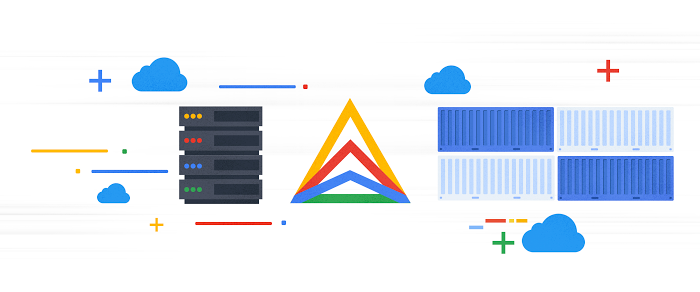IDC’s research findings on the end-user experience running Windows applications on Google Cloud
Sriram Subramanian
Research Director, Infrastructure Systems, Platforms and Technologies Group, IDC
Editor’s note: In this blog post, we hear from Sriram Subramanian, Research Director, Infrastructure Systems, Platforms and Technologies Group from IDC. Google commissioned Sriram to research the motivating strategic factors for moving and modernizing Windows workloads to the cloud. What he found is that Google Cloud proves to be an ideal platform for Windows Server-based applications. For more on this, tune in to the on-demand webinar on this topic.
Line of Business (LOB) applications and workloads are critical to the success of an enterprise. Therefore, the continuous availability of enterprise applications is of paramount importance. Windows Server-based workloads constitute no small share of those enterprise workloads. IDC's Server Workloads Tracker shows that about 45% of servers shipped worldwide in 2019 were based on the Windows Server operating system.
Two primary Windows Server workloads are business applications built using the .NET framework on the Windows operating system and database applications using SQL Server. Both rely on underlying infrastructure platforms for performance, security, and availability. They also tend to be composed of tightly coupled components. For example, in a standard three-tier model-view-controller (MVC) application, the “controller” is strongly tied to the database backend, as are the “view” and “model'' components. In a Windows Server context, the SQL Server database backend depends on the storage cluster to ensure high availability and data consistency (for example, active-active or active-passive), and that involves a complicated storage cluster setup. These requirements often complicate moving Window-server based applications to public cloud environments.
IDC recently interviewed end users as part of a study commissioned by Google Cloud. The study was aimed at understanding the end-user experience running Windows applications on Google Cloud. In this study, we found that enterprise customers find Google Cloud to be an optimized platform for Windows Server-based workloads, for a variety of reasons.
Platform for application modernization
Survey participants were unequivocal that Google Cloud provides a reliable platform for modernizing Windows-based workloads. Almost all participants indicated beginning with the “lift and shift” pattern to migrate Windows applications to Google Cloud. However, after migrating applications to Google Cloud, participants were able to leverage cloud-based services such as Cloud SQL and Managed Active Directory, and cloud-native technologies such as Google Kubernetes Engine (GKE) and Knative, to refactor or rearchitect Windows applications on Google Cloud. Google Cloud's solutions also include migration tools such as Migrate for Compute Engine and Migrate for Anthos, which make migrating Windows applications to VMs on Google Cloud or containers on GKE easier.
Respondents also indicated that they turned to Google Cloud's technology partners for application migration and modernization. They also had plans to replace components of Windows applications with Linux-based services, with the eventual goal of moving completely off Windows. They found the combination of Windows .NET Core, Kubernetes, and Linux on Google Cloud provided a strong foundation for modernizing Windows applications.
Technology capabilities
Survey respondents found running Windows applications on Google Cloud easy due to its enterprise-ready core technology capabilities. These include its VM sizing, platform/networking performance, platform security, AI/ML and data analytics capabilities, and modern infrastructure constructs.
When Windows-based applications are migrated to public cloud infrastructure, end users typically provision virtual instances comparable to their on-premises servers, which often results in inefficient resource allocation on the public cloud. Google Cloud allows for custom VM sizes, enabling respondents to fine-tune virtual instance sizes to provide an optimal price-performance ratio.
Respondents also found security capabilities such as Managed Service for Microsoft Active Directory (AD) to enable easier deployment, management, and high availability of services across multiple regions. They also found that data analytics capabilities such as BigQuery allow them to leverage analytics without any operational overhead.
Cost optimizations
Survey respondents found that Google Cloud provides cost savings in both the near- and the long- term. For example, the Bring Your Own License (BYOL) model for SQL Server enables end users to utilize existing licenses, providing significant cost savings. One respondent observed a nearly 40% cost saving by moving SQL Server instances to Google Cloud from another public cloud service provider. Respondents also leveraged capabilities such as Custom VM sizing to fine-tune their cloud resources.
Challenges
Respondents also indicated challenges migrating workloads to Google Cloud, which you can learn about in the InfoBrief. Google Cloud is actively working to address these challenges and customers should not be deterred from considering Google Cloud for running and modernizing Windows-based workloads.
Summary
In total, survey respondents found Google Cloud to be an optimized platform for running Windows-based workloads. IDC recommends taking a workload-centric, multi-phased approach to migrating workloads to public cloud infrastructure, and to migrating Windows Server workloads to Google Cloud. Such an approach enables end users to mitigate common challenges with adopting public cloud infrastructure. It also enables end users to optimize their resource consumption on public cloud and eventually migrate business-critical/mission-critical applications to the public cloud as well.
For more details, read the IDC InfoBrief, “Modernize your Windows Server Workloads using Google Cloud Platform,” or view the accompanying webinar.

